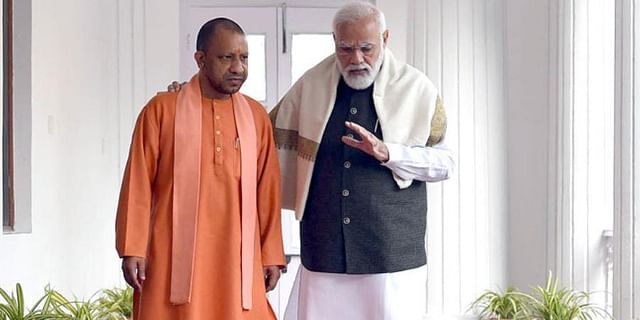
BJP weaves Hindutva, caste equations to deliver thumping win

With trends suggesting win in four out of five states that went to polls recently, the Bharatiya Janata Party (BJP) seems set to be the pivot of Indian politics for a long time to come.
Except Punjab, where the party has been traditionally weak, the BJP is ready to retain power in Uttar Pradesh, Uttarakhand, Manipur and Goa.
Its vote percentage is a solid 42 per cent in UP, India’s most populous state, and about 44 per cent in Uttarakhand. Even in Manipur the party has garnered a good 37 per cent vote share.
The BJP has also upset some established trends, like a party not being able to win consecutive elections in UP and Uttarakhand.
The saffron party’s success is not something that is internal to its own electoral performance. What further bolsters it is the dwindling performance of its only national rival, the Congress, which has not just lost to its main rival in all direct contests this time around, but also faced a rout in Punjab, where Aam Admi Party has not just swept the polls but is all set to defeat all Congress stalwarts, including Chief Minister Charanjeet Singh Channi and Navjot Singh Sidhu.
While AAP has successfully expanded beyond Delhi, it has a long way to go before it can replace the Congress as a viable national party with a presence in multiple states.
With no alternative to the BJP visible at the national level, the Congress seems likely to stay in pole position for a long time to come.
Significantly, much publicity about the ‘mis’handling of the pandemic and job losses has failed to stem the tide of the BJP. The reason: policies like free ration during the pandemic in UP, the provision of gas cylinders to the poor and construction of ‘pucca’ houses for the homeless have delinked the individual experience of development, a nebulous term, from macroeconomic number-crunching. Add to it the normalisation of Hindutva as an idea and the building of caste alliances in UP… the BJP’s winning formula seems to be sustaining for a longer span of time than analysts thought.
In Uttar Pradesh, Akhilesh Yadav tried the politics of the 1990s when he sought to wean away leaders from small OBC castes from the BJP to stitch together a social coalition of backwards and Muslims. However, this did not work, as the BJP has successfully combined caste and Hindutva, making deep inroads among non-Yadav OBCs and non-Jatav Dalits. The BJP has gained from the early mover advantage of 2014, when the surplus of seats that not fielding Muslims offered to it, made it possible for the BJP to reach out to smaller OBC castes without having to reduce the representation of the ‘upper castes’, its original vote bank.
Also read: Explained: Why caste-based census is not happening in India
Identities are fluid and fuzzy, and the backward classes can as easily see themselves as votaries of Hindutva as its adversaries. The charge that Samajwadi Party did not do enough for OBCs except Yadavs seems to have stuck to it. The increased representation given by the BJP to OBCs, Dalits and tribals — something also witnessed during the last expansion of the Union council of ministers — seems to have made smaller OBC and Dalit castes view the party favourably.
Moreover, what is often forgotten is that the shared adherance to Hindutva as an idea across the caste spectrum can undercut the social disabilities caste imposes. Modi himself belongs to Ghanchi, a small OBC caste in Gujarat, but has risen to a high status only on account of his adherance to Hindutva. To believe that castes that aren’t placed high in the social order must detest Hindutva is, thus, just a belief with no substantial basis to it.
Another thing that has perhaps benefitted the BJP is that voters often assess a party’s performance on its ability to deliver on its promises.
Much liberal and left opinion critical of the BJP does not realise that what it sees as polarisation on grounds of religion is seen by core voters of the BJP as fulfilment of what was promised. The party under Narendra Modi did revoke Article 370 of the constitution conferring special status on Kashmir, something it had been promising since the days of the Jana Sangh. The Ram temple is also coming up at Ayodhya, albeit after a verdict of the Supreme Court.
Triple talaq has also been abolished by the court, though this happened when Modi was in power.
To common voters, it seems that Modi delivered on the core promises of his party.
The Congress, by contrast, is seen as having failed to alleviate poverty, something Indira Gandhi had promised in the early years of her Prime Ministership.
In other words, the BJP is seen to deliver on what it promises. Unless those who do not agree with the Hindutva worldview of the BJP realise that the fulfilment of core Hindutva promises not just enthuses the core support base but also attracts fence-sitters — thereby expanding the core social constituency of the party — they will not be able to understand the enduring support of voters for the BJP, doomsday predictions of the party’s critics notwithstanding.
(The writer is a political commentator and media educator)


